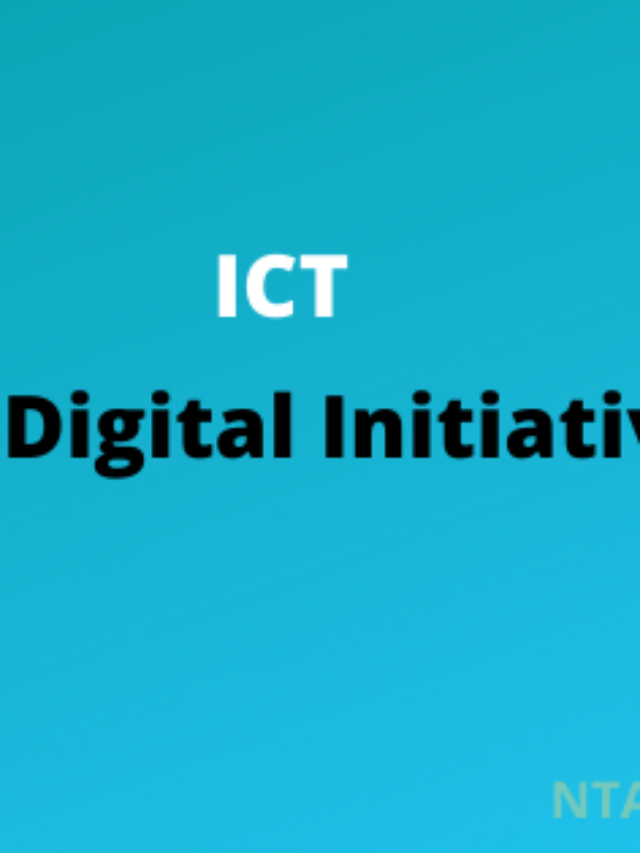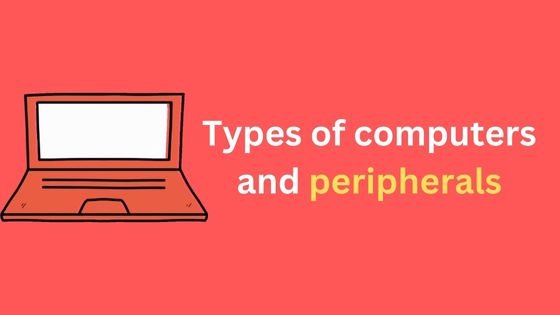Computers and peripherals refer to the hardware components that make up a computer system. A computer is the main unit, which includes the central processing unit (CPU), memory, storage, and other internal components. Peripherals are additional devices that connect to the computer, such as a keyboard, mouse, monitor, printer, and external storage devices. These peripherals allow the computer to interact with the user and perform various functions.
Types of computers
- Desktop Computers: These are the most common type of computers found in homes and offices. They are designed to be placed on a desk or table and are typically larger in size compared to other types of computers. They come with a variety of components such as a central processing unit (CPU), memory, storage, and a display screen. They also have several peripheral ports such as USB, HDMI, and Ethernet for connecting external devices such as printers, scanners, and external hard drives.
- Laptop Computers: These are portable computers that are designed to be carried around easily. They come with a built-in display screen, keyboard, and touchpad. They also have a battery that allows them to operate without being plugged into a power outlet. They are ideal for people who need to work on the go and are commonly used by students and business professionals.
- Tablet Computers: These are lightweight and portable devices that are designed for touch-based navigation. They come with a built-in display screen and a touch-sensitive screen that can be used for input. They are commonly used for web browsing, social media, and video playback. They are also useful for taking notes and creating digital sketches.
- Servers: These are specialized computers that are designed to handle large amounts of data and multiple users. They are commonly used in businesses and organizations to store and manage data, run applications, and provide network services. They come with powerful processors, large amounts of memory and storage, and multiple network interfaces.
- Gaming computers: These are specialized computers that are designed for gaming. They come with powerful processors, high-end graphics cards, and large amounts of memory. They are also designed to handle high-resolution graphics, fast frame rates, and complex game physics. They are commonly used by professional gamers and enthusiasts.
- Workstation computers: These are specialized computers that are designed for professional use, such as 3D modeling, video editing, and scientific research. They come with powerful processors, high-end graphics cards, and large amounts of memory. They are also designed to handle large amounts of data and demanding workloads. They are commonly used in creative industries and scientific research.
- Mainframes – These are large, expensive computers that are designed for high-volume data processing. They are typically used by large organizations such as banks and insurance companies.
- Supercomputers – These are the most powerful computers in the world, used for advanced scientific research and simulations. They are typically used by universities, research institutions, and government agencies.
Types of peripherals
- Monitor: A monitor is a peripheral device that displays visual information on a computer screen. They come in various sizes, resolutions, and technologies such as LCD, LED, and OLED. Monitors can be connected to a computer via HDMI, VGA, or DVI cables.
- Keyboard: A keyboard is a peripheral device that allows users to input data into the computer. It is composed of keys that represent letters, numbers, and symbols. A keyboard can be connected to the computer via USB or PS/2 ports.
- Mouse: A mouse is a peripheral device that allows users to navigate and interact with the computer. It is composed of buttons and a scroll wheel. The cursor on the screen is controlled by moving the mouse. Mice can be connected to the computer via USB or PS/2 ports.
- Printer: A printer is a peripheral device that allows users to print documents, photos, and other types of media. There are several types of printers such as inkjet, laser, and thermal printers. They can be connected to the computer via USB, Ethernet, or Wi-Fi.
- Scanner: A scanner is a peripheral device that allows users to digitize documents, photos, and other types of media. It uses a light source to capture an image and then converts it into a digital format. Scanners can be connected to the computer via USB or Ethernet.
- Microphone: A microphone is a peripheral device that allows users to record audio. They come in different types such as USB, XLR, and condenser microphones. They can be used for recording music, podcasting, or video conferencing.
- Headphones: Headphones are a peripheral device that allows users to listen to audio from the computer. They come in different types such as in-ear, over-ear, and noise-canceling headphones. They can be connected to the computer via a 3.5mm jack or USB.
- Webcam: A webcam is a peripheral device that allows users to capture video and audio. They can be used for video conferencing, streaming, or taking photos. Webcams can be connected to the computer via USB or built-in on laptops.











